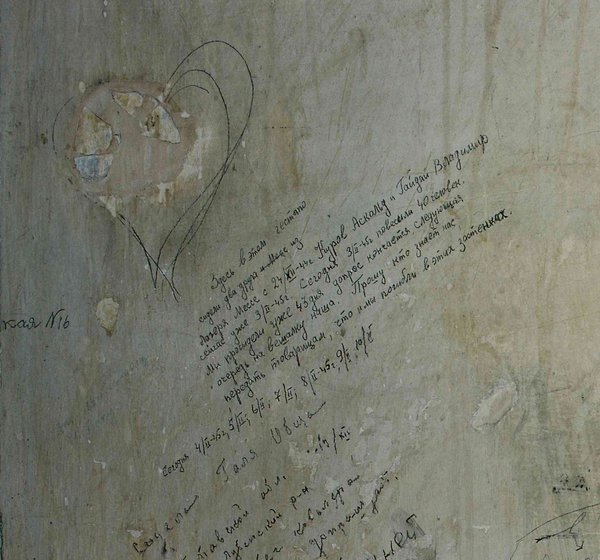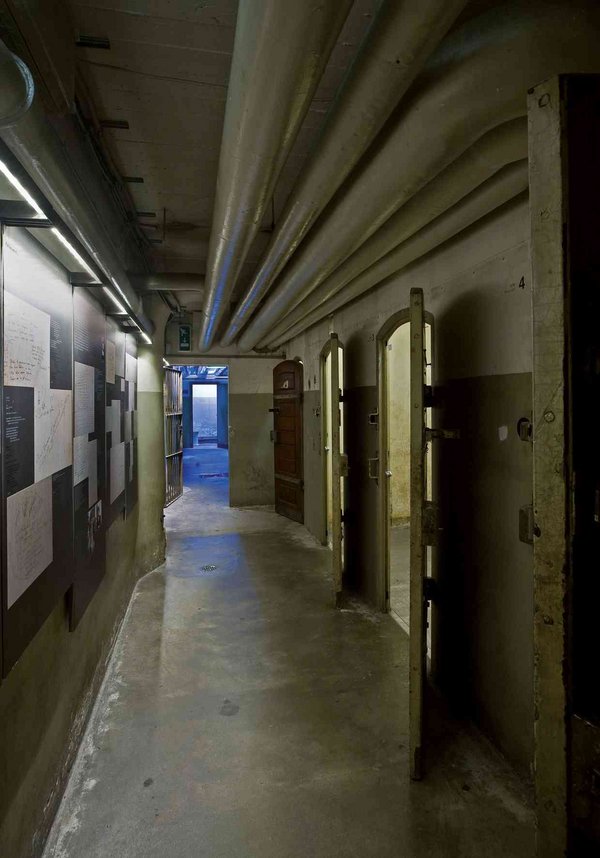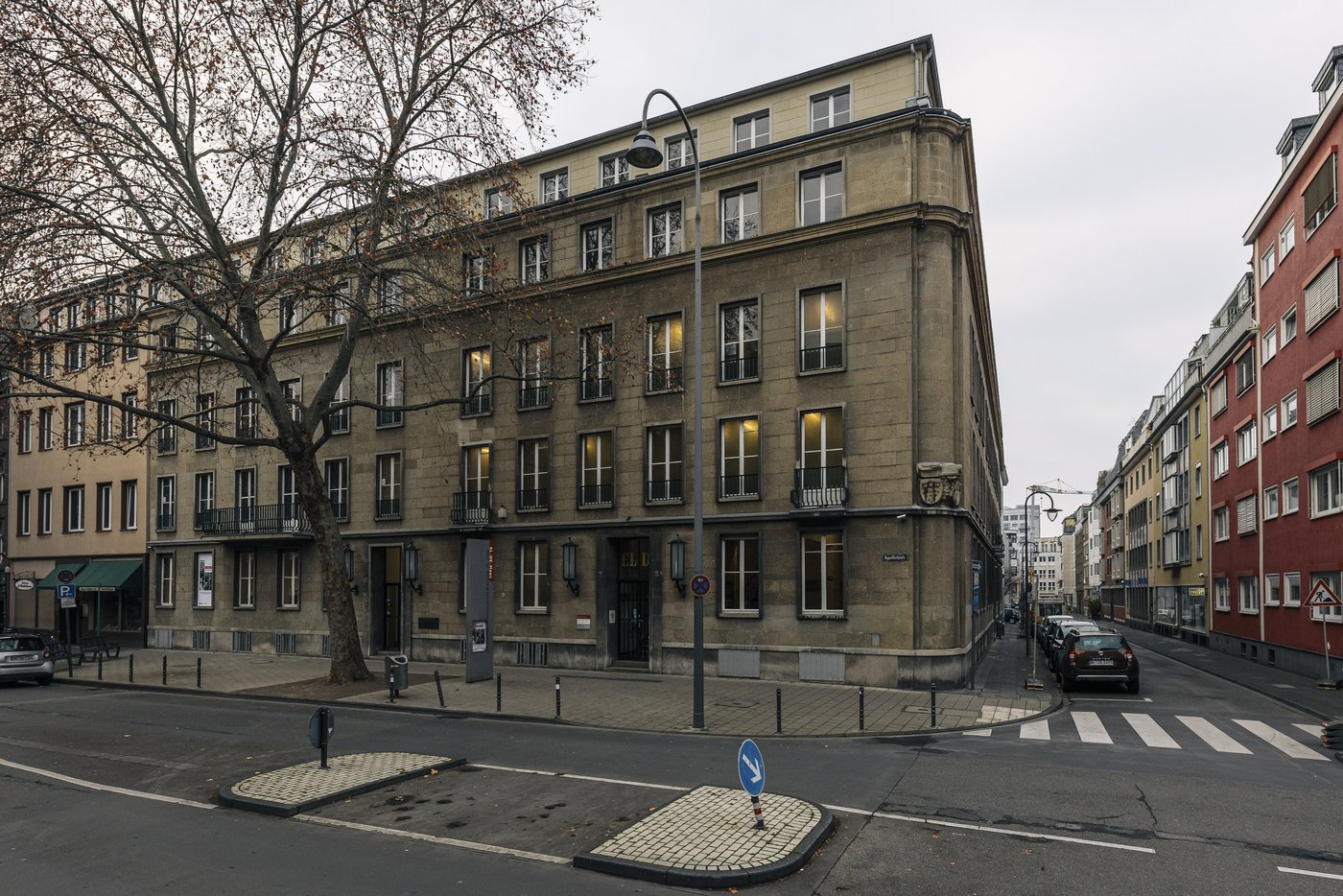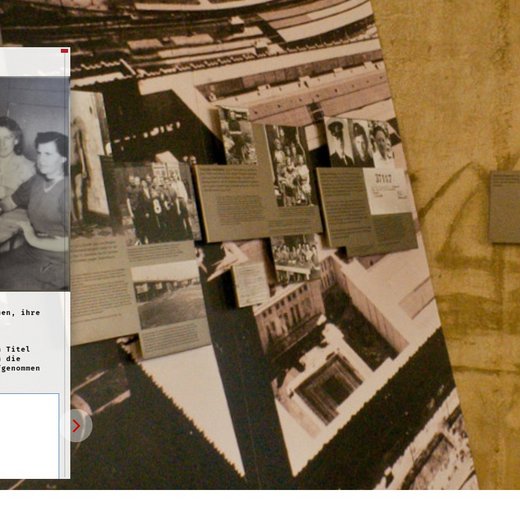
NS Documentation Centre of the City of Cologne
The EL-DE House, named after its builder, Leopold Dahmen, was built as a residential and business property in the Cologne inner city. The Secret State Police (Gestapo) rented it even while it was still being built in 1934-35. From here, the Gestapo officers kept watch on the population and organised racially-motivated and political persecution in the Cologne Government District from December 1935 to March 1945. During the Second World, this was also extended to the Aachen District and the occupied Belgian areas of Eupen and Malmedy.
The officers had their offices on the upper three floors. Questioning took place in these rooms, while interrogations and massive torture were carried on mainly in the in-house prison and the cellars beneath it.
There were a total of ten detention cells in the building’s cellar, and they were used to house the people persecuted by the Gestapo between interrogations. At 4.3 m² to 9.3 m² in size, these cells were probably originally intended for one or two people.
During the war, forced labourers increasingly became the focus of the Gestapo’s attention. The radicalised persecution resulting in the imprisonment of countless forced labourers led to massive overcrowding in the cells with dire hygienic conditions. The Gestapo themselves referred to eight- to ten-fold overcrowding, and one contemporary inscription even mentions 33 people in one cell.
More than 1,800 separate inscriptions can still be found today on the walls from the period of the war, more than a third of them written in Cyrillic script. The imprisoned people described their situation, their fears, worries and thoughts, wrote fictitious letters to their distant families, drew pictures of their loved ones, wrote defiant slogans or simply counted off the days of their imprisonment.
In the autumn of 1944 the Gestapo began hanging prisoners from the in-house prison and other detention centres in the courtyard of the EL-DE House. Most of these were forced labourers. In all, more than 400 people were murdered, and their bodies were taken away in city refuse collection vehicles to a mass grave in Cologne’s Western Cemetery.
The last bodies could no longer be taken away. They were discovered in October 1945 with the gallows in the inner courtyard of the EL-DE House. Even though these crimes were committed right in the middle of the city under the very eyes of the city’s society, the memory of the Nazi period was largely suppressed in Cologne, too, as elsewhere.
The City of Cologne used the EL-DE House after the war as offices for various city authorities. The cells with their unique inscriptions fell into decay as storage space for files and rubbish. It took decades and needed immense civil engagement and protests to get the Gestapo Prison Memorial finally opened in the cellar in 1981. The former offices of the Gestapo have housed the exhibition ‘Cologne under the Nazis’ since 1997. Today, the EL-DE House is an open and multi-faceted place, a research and documentation centre, a meeting place and events venue and a place for learning about history, for the formation of democracy and for educational work against racism and right-wing extremism.


Address
Opening Hours
Tuesday to Sunday: 10 am –6 pm
Saturday and Sunday: 11 am –6 pm
First Thursday each month: 10 am –10 pm
Guided tours: 0221/2212-6331
Träger



